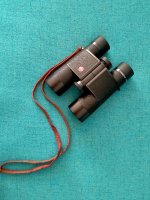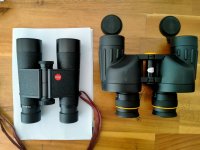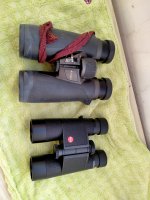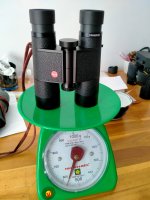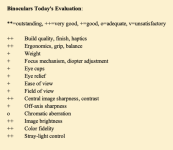Hi again Galazie,
I take your point about different users having differing degrees of appreciation of/ sensitivity to various optical phenomena. However, in relation to aspects such as the focus action and image qualities, your experiences seem to differ radically from other 7x35 Retrovid users
e.g. see some comments from Roger Vine at:
Leica Trinovid 7x35 ('Retrovid') Review
'Focus action is silky smooth, accurate and free of shift or backlash, effectively perfect . . . Again, the action is ideal – accurate and smooth and just stiff enough to prevent you shifting it by accident.'
'Resolution seems outstandingly good. Watching a crow strutting in the rain, I can see every detail of feather and beaded droplets shining on his back. Colour is naturally rendered and sharpness outstanding. Focus snap is exceptionally good too, indicating high optical quality.'
'The low false colour, wide
real field of view, high resolution and good depth of field make these great for finding and watching birds on the wing and I have fun watching my local Jackdaws wheeling about in stormy winds.'
'Forget any idea that ‘Made in Portugal’ means build quality is second rate. These are some of the most beautifully made binos, optically and mechanically, I have ever seen, with flawless build and operation.'
And more regarding CA (which Roger is particularly observant of) and stray lighting:
'False colour is very well controlled and you’d be forgiven for thinking there’s none at all. Actually, there is a trace of purple edging a chimney pot in silhouette, or when panning through branches under a bright dusk sky; but even the field edge, where other distortions creep in, doesn’t reveal too much. Viewing birds in high branches is never an issue. False colour levels are actually slightly lower than the Trinovid HDs I reviewed.'
'I had no problems with stray light. Even the full Moon yielded just one dimmish ghost, a security light ditto. This is another area they beat the Trinovid HDs, which produced long prism spikes when set on a very bright light.'
The above is in the context of multiple structured reviews that Roger has conducted over the years, see at:
Binocular Reviews
The concern of others and myself is that your impressions seem to differ far more than what individual differences between observers would indicate, and hence your particular unit may not be up to specification. Ideally you should be choosing to use it, not in spite of optical limitations, but rather because of the strength of the optical performance.
John




